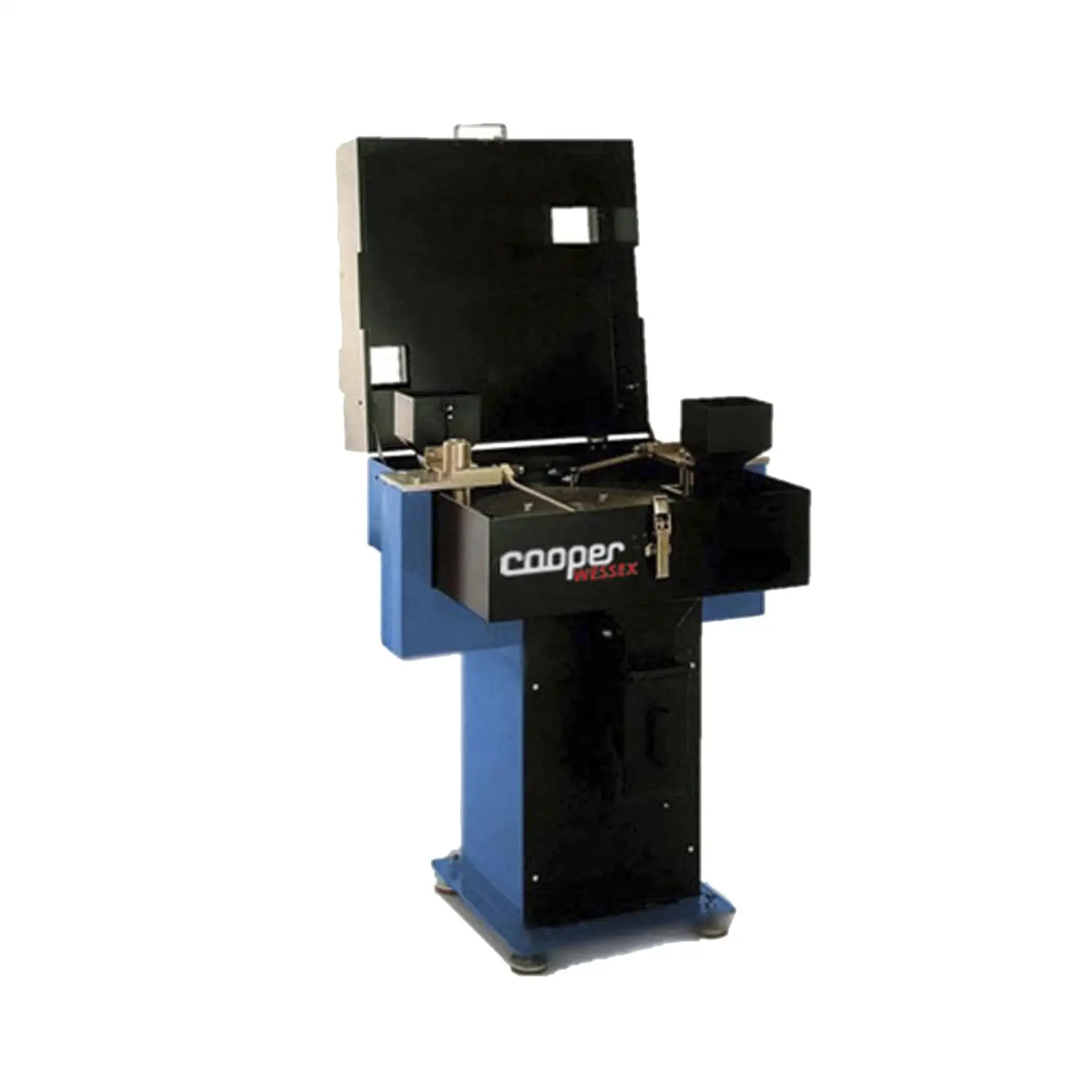Product by Cooper
Aggregate Abrasion Machine
Introduction
The Cooper-Wessex Aggregate Abrasion machine determines the AAV by testing the measure of the resistance of aggregate to surface wear by abrasion Inadequate abrasion resistance of road surfacing aggregates means an early loss of the texture depth required to maintain high speed skidding resistance. The Cooper-Wessex Aggregate Abrasion machine determines the Aggregate Abrasion Value by testing the measure of the resistance of aggregate to surface wear by abrasion. Two specimens are pressed against the surface of a steel disc rotating in a horizontal plane, with a force of 0.365 Newton's per sq. centimetre. Sand, fed by hoppers, is used as an abrasive. After 500 disc revolutions the amount of material abraded is measured by calculation of the weight loss of the aggregate. The percentage loss in mass of chippings as known as the 'Aggregate Abrasion Value' (AAV), and ranges from about 1 for hard flints to over 16 for aggregates normally considered too soft for use in road surfacing.
Features
- Heavy duty mainframe on adjustable anti vibration pads . Steel lap wheel 610 mm diameter
- Precision machined steel shaft and sealed bearings
- Inverter drive to 3 phase motor for precise speed control
- Totally enclosed, grease filled gear box
- Scraper blades for sand removal
- Predetermined revolution counter
- 24 V DC control circuits for safety
- Interlocked cabinet lid for safety
- Sand Scoop to collect spendrift
- CE approved
Applications
- To determine the Aggregate Abrasion Value
Pendulum Skid
Introduction
The Cooper-Wessex skid resistance tester is one of the best portable skid resistance tester in the world. The Cooper-Wessex Pendulum Skid Tester CRT-PENDULUM is the high quality skid resistance testing equipment. Originally designed in the 1940s in the US, the instrument was further developed in the 1960s at the UK Transport Research Laboratory for the testing of road surfaces. The CRT-PENDULUM measures the frictional resistance between a rubber slider mounted on the end of a pendulum arm and the test surface. This provides highway engineers with a routine method of checking the resistance of wet and dry surfaces to slipping and skidding, both in the lab and on site. It is based on the Izod principle: a pendulum rotates about a spindle attached to a vertical pillar. At the end of the tubular arm a head of known mass is fitted with a rubber slider. The pendulum is released from a horizontal position so that it strikes the sample surface with a constant velocity. The distance travelled by the head after striking the sample is determined by the friction of the sample surface. A reading of Skid Resistance is obtained.
Features
- Designed for laboratory and in situ road surface testing
- Dispatched calibrated to EN1097-8 (accredited under ISO 9001:2000)
- Low friction arm, and lightweight pointer
- Comes with integral 'F' scale for use with small slider set for 76mm slide length. (PSV test)
- Repeatable and reproducible
- Supplied with robust carrying case
- Made in the United Kingdom
Appliicatons
- Assessment of surface friction and skid resistance properties
- Testing of aggregates in the PSV (Polished Stone Value) test
- Testing of new road surface materials under development
- Testing of pedestrian walkways
- Traffic accident investigations
- Litigation investigations
- Testing of pavers in the Flat Bed Polish.


